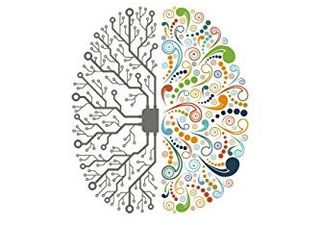Parapsychology
Out-of-Body Experiences: Interpreting the God Spot
Part 8: The brain basis of mystical and out-of-body experiences
Posted August 8, 2019
There is now plenty of evidence to home in on the right TPJ as the source of out-of-body experiences, as described in my previous post (Blanke et al 2002) but what does it mean to have found this special place in the brain?
Perhaps it means nothing at all. You might argue that we still cannot explain the OBE just because scientists have found the spot that can induce one. Indeed, this finding could work either way. For some people it will be proof that the OBE is a perfectly natural phenomenon; for others it may imply that the disturbed brain releases the spirit from being trapped inside the body. And perhaps there’s a third possibility: that there are two totally different kinds of experience; the artificially induced, brain-based OBE which is a hallucination, and the truly spiritual sort which is not. In that case we should not make the mistake of confusing them.

We can therefore consider three possibilities (Blackmore 2017).
1. Something leaves the body. i.e. dualist theories involving soul, spirit or astral body. Perhaps the brain releases the soul after death and if stimulated in the right way during life it can do the same, or perhaps the brain normally prevents the soul departing but if this fails the soul is accidentally released.
2. Nothing leaves the body. i.e. dualism is false; mind and brain are not separate and there is no soul, spirit or astral body. The brain can create the illusion of leaving the body; perhaps it constructs our normal sense of being inside the body and when this malfunctions we feel as if we are going outside the body.
3. There are two different kinds of OBE: ‘real’ OBEs in which something leaves the body, and fake ones which are illusions or hallucinations.
How can we find out which is right? Simply finding the ‘OBE spot’ in the brain is not enough to settle the issue. Indeed, this discovery reminds me of the delightful arguments over the so-called ‘God spot’ and it may help to think about this fascinating story.
When brain scans were used to show that spiritual experiences have a basis in brain activity, the media were quick to proclaim that the ‘God spot’ had been found. The arguments soon became polarised between those who thought this showed there is no need for a God (Ramachandran 1998), and others who claimed the opposite – that God uses this spot in the brain to make his presence felt, or that ‘we’ use our brains to contact the divine (Newberg and D’Aquili 2001). Others went even further, claiming that the ‘seat of the soul’ had been found; or ‘the part of the brain that literally communicates with God’; ‘the place where the material and the spiritual worlds meet’ (Morse 1990 p 110).
Among experiments that set off the ‘God spot’ debate, was one in which Carmelite nuns were studied in a scanner while “subjectively in a state of union with God” (Beauregard and Paquette 2006 p 186). Another study tested Buddhist meditators and Franciscan nuns deep in prayer, using SPECT (single photon emission computed tomography) , and found “a sharp reduction in activity levels” in part of the posterior parietal lobe (Newberg et al, 2003). The authors suggested that this area orients the person in physical space and distinguishes their own body from the outside world. When deprived of sensory input during deep meditation or prayer this distinction fails, leading to a sense of oneness with all, or with God (Newberg and D’Aquili 2001).
To me this suggests a naturalistic explanation for the mystical sense of oneness or nonduality. Indeed Newberg and D’Aquili declare that the experience is “biologically, observably, and scientifically real.” (2001 p 7). But they do not mean what most scientists would mean by this. They conclude that the experience is not “a delusion caused by the chemical misfirings of a bundle of nerve cells”. Rather, these brain processes evolved “to allow us humans to transcend material existence and … connect with a deeper, more spiritual part of ourselves” (p 9). They seem to want to have it both ways.
Does this help us with OBEs? Whether you have a brief OBE or a profound religious experience you are likely to wonder about the self: Am I a spirit that can leave my body? Am I one with God or with the universe? If not, what am I? But there is an important difference. In OBEs the self still feels like a separate conscious entity, whereas in mystical and religious experiences that sense of separation is lost. For religious people this may be interpreted as merging with God or the divine. Buddhists may see it as a realisation that the self is not an eternal essence or persisting entity, but is impermanent like everything else. For the non-religious it may mean entering a natural interconnectedness with the universe or a realisation of nonduality. My own experience, all those years ago, (described in a previous post) culminated in this loss of separation or experience of nonduality. Whichever way you interpret it, this kind of experience provokes wondering about the self.
But back to the God spot – these associations between brain and experience can be interpreted in totally opposite ways. So if we don’t want to end up in the same impasse over OBEs we need to do far more than discover the spot that can induce them and then argue about what it means. We need to know why this particular brain area can induce OBEs when other parts of the brain apparently cannot. So what is the function of the TPJ? Could it have something to do with the nature of self, and so help us find a way out of the impasse? In my next post I will delve into this question.
References
Beauregard,M. and Paquette, V. 2006 Neural correlates of a mystical experience in Carmelite nuns. Neuroscience Letters, 405, 186–190
Blackmore, S. 2017 Seeing Myself: The new science of out-of-body experiences
Blanke, O., Ortigue, S., Landis, T. and Seeck, M. 2002 Stimulating illusory own-body perceptions. Nature, 419:269-70
Morse, M. 1990 Closer to the Light, London, Souvenir
Newberg, A. and D’Aquili, E. 2001 Why God Won’t Go Away: Brain Science and the Biology of Belief, New York, Ballantine
Newberg, A., Pourdehnad, M., Alavi, A., & D’Aquili, E.G. 2003. Cerebral blood flow during meditative prayer: preliminary findings and methodological issues. Perceptual and motor skills, 97(2), 625-630
Ramachandran, V. S. and Blakeslee, S. 1998. Phantoms in the brain: Probing the mysteries of the human mind, New York: William Morrow.


